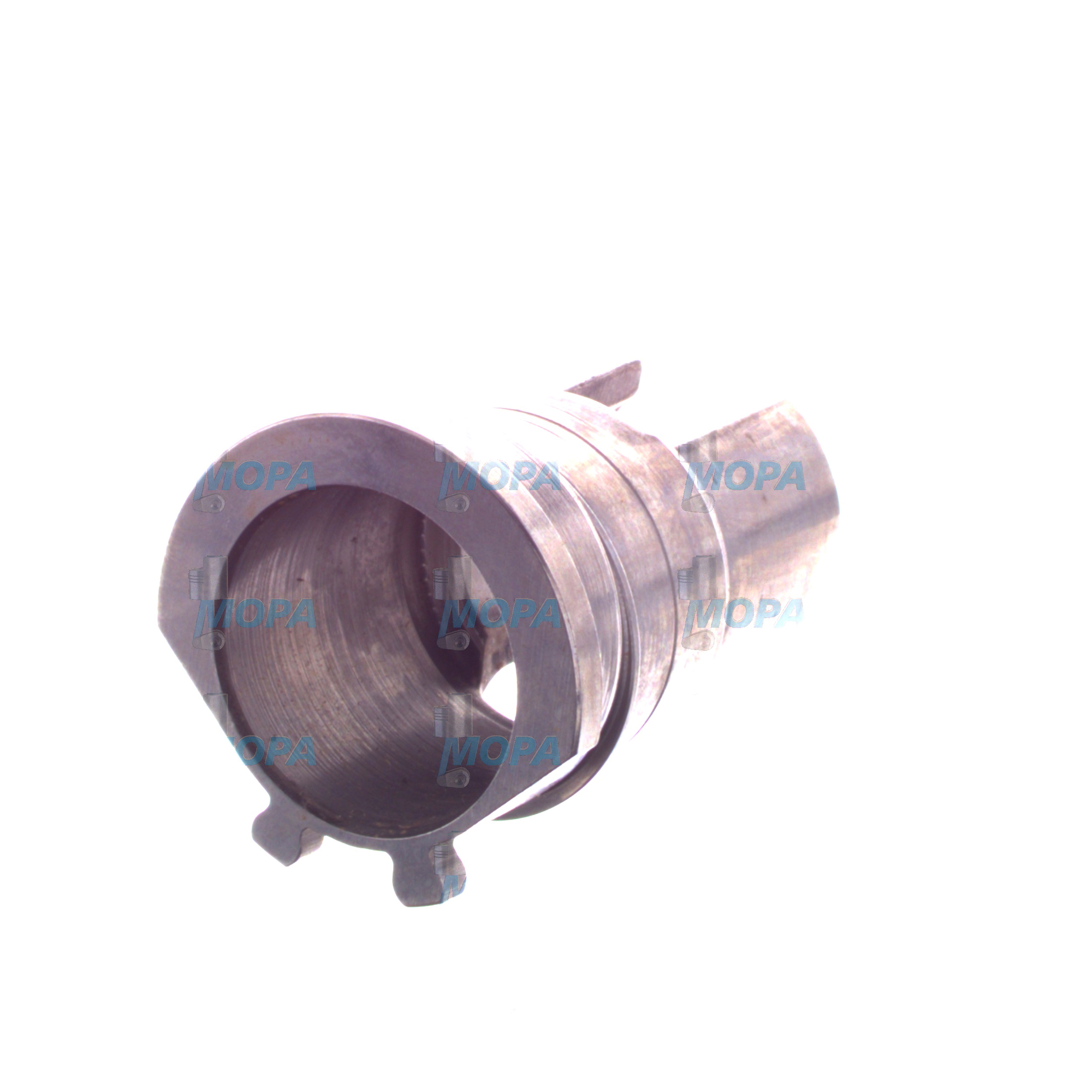CONTROL SLEEVE — Sleeves for marine and diesel engines
Sleeves are precision-engineered cylindrical components that create highly controlled sliding or sealing interfaces inside engines. In large-bore marine engines and compact industrial diesel engines alike, sleeves form the wear-resistant running surface for pistons, guide valve stems, stabilize shafts, or meter fuel inside injection equipment. By providing a replaceable, dimensionally stable surface with superior metallurgy and finish, sleeves protect the parent housing or engine block and maintain critical clearances that determine performance, emissions, and fuel economy.
Within this category, applications range from cylinder liners to pump and shaft sleeves. A CONTROL SLEEVE is especially relevant in fuel systems, where it meters flow with micrometer accuracy. Whether you operate a high-output marine engine or a CHP gas engine, selecting the right sleeves and CONTROL SLEEVE OEM parts directly affects uptime, service intervals, and lifecycle cost.
Technical function of Sleeves and the CONTROL SLEEVE in a diesel engine
Cylinder sleeves (liners) establish the tribological pairing between piston rings and the cylinder wall. In a diesel engine, the sleeve is manufactured from high-strength, centrifugally cast alloy iron or hardened steel to deliver: roundness under thermal load; a plateau-honed surface that retains oil; and corrosion resistance against acidic blow-by. Dry liners are press-fitted into the block for maximum rigidity; wet liners stand in direct contact with coolant and use sealing rings to isolate the crankcase. Correct protrusion, flange support, and surface finish (typically 0.2–0.6 μm Ra with 40–60° honing angle) are vital to achieve compression, minimize oil consumption, and prevent scuffing.
Beyond cylinders, sleeves also protect shafts against abrasive media in pumps, support valve guides, and isolate rotating components from housings. Tolerances are measured in microns; geometry—straightness, roundness, and taper—ensures a stable oil film and controlled wear-in behavior.
CONTROL SLEEVE in fuel injection for marine engine applications
In mechanical injection equipment, the CONTROL SLEEVE works as the precision partner to the plunger or spool, coordinating fuel quantity and timing. As the plunger rotates or translates, its helical edge and the CONTROL SLEEVE’s ports open and close spill paths, defining effective stroke and injected volume. For a marine engine running variable loads, this metering stability keeps cylinder-to-cylinder balance tight, reduces black smoke, and protects turbochargers. In high-pressure diesel engine systems, the CONTROL SLEEVE must maintain sub-2 μm roundness and a hardened, superfinished bore to prevent internal leakage and maintain rail or pump efficiency. Using CONTROL SLEEVE OEM parts here preserves injection mapping and protects pistons, liners, and bearings from over-fueling.
- · Tight dimensional tolerances preserve compression and oil control.
- · Wear-resistant alloys and coatings extend service intervals.
- · Optimized honing retains oil and reduces ring break-in time.
- · CONTROL SLEEVE precision metering stabilizes combustion.
- · Wet and dry designs match engine cooling architecture.
- · Consistent geometry reduces blow-by, smoke, and fuel consumption.
- · Proven compatibility with marine engine operating profiles.
Importance of Sleeves and the CONTROL SLEEVE for reliable engine operation
Engine reliability starts with stable clearances and consistent combustion. Worn or out-of-spec sleeves compromise sealing, raise blow-by, and accelerate oil degradation. Typical failure modes include scuffing from lubrication loss, cavitation erosion on wet liners, corrosive pitting from acidic condensates, and fretting at the liner seat. The results are higher oil consumption, reduced compression pressure, difficult cold starts, and elevated exhaust temperatures that stress exhaust valves and turbochargers.
On the fuel side, a worn CONTROL SLEEVE in a diesel engine causes internal leakage and erratic metering. That can lead to poor cylinder balance, increased particulate emissions, turbo fouling, and elevated specific fuel oil consumption. In extreme cases, over-fueling damages pistons and liners; under-fueling drives misfires that load bearings. Keeping both sleeves and CONTROL SLEEVE components within specification preserves power density, cuts fuel burn, and safeguards class compliance for marine assets.
Advantages of OEM spare parts suitable for Sleeves and CONTROL SLEEVE OEM parts
When replacing sleeves or the CONTROL SLEEVE, consistency is everything. OEM spare parts suitable for Sleeves replicate the intended metallurgy, heat treatment, and geometry—factors that determine how the component expands with temperature, how it carries load, and how it manages lubrication. That fidelity translates into predictable performance and longer service life.
For cylinder sleeves, this means correct wall thickness, flange hardness, and seat tolerances to avoid liner movement and micro-leakage. For a CONTROL SLEEVE, it means matched fits with the plunger/spool, micro-finish that resists scuffing at start-up, and verified port geometry that maintains fuel maps. Across a fleet, using CONTROL SLEEVE OEM parts streamlines maintenance planning, reduces troubleshooting time, and protects budgets by eliminating trial-and-error replacements.
Additional benefits include documented material traceability, dimensional inspection records, and compatibility with service bulletins—practical safeguards that keep critical spares reliable during lay-up and storage. In short, OEM spare parts suitable for Sleeves sustain engine efficiency, reduce unplanned downtime, and provide consistent outcomes for both diesel and gas engines.
MOPA — your partner for OEM spare parts Sleeves and CONTROL SLEEVE solutions
MOPA supplies OEM parts for diesel and gas engines with a focus on speed, quality, and security throughout the transaction. Whether you need cylinder sleeves for a deep-sea vessel or a CONTROL SLEEVE for a mechanical injection pump, our team cross-references part numbers, verifies specifications, and delivers on tight schedules worldwide. We help purchasers and technical teams bundle related items—seals, rings, and installation tooling—to minimize downtime and ensure a first-time-right overhaul.
With robust sourcing, documentation, and logistics, MOPA supports emergency shipments, planned dockings, and shore-based power applications. The result is a dependable path to OEM spare parts suitable for Sleeves that protect engine performance and simplify lifecycle management.
Conclusion — Sleeves and CONTROL SLEEVE choices that protect performance
Sleeves provide the controlled, durable interfaces that engines depend on; a precise CONTROL SLEEVE keeps fuel delivery accurate in both marine engine and stationary diesel engine service. Selecting OEM spare parts suitable for Sleeves and CONTROL SLEEVE OEM parts safeguards efficiency, extends service life, and stabilizes budgets across the fleet.










